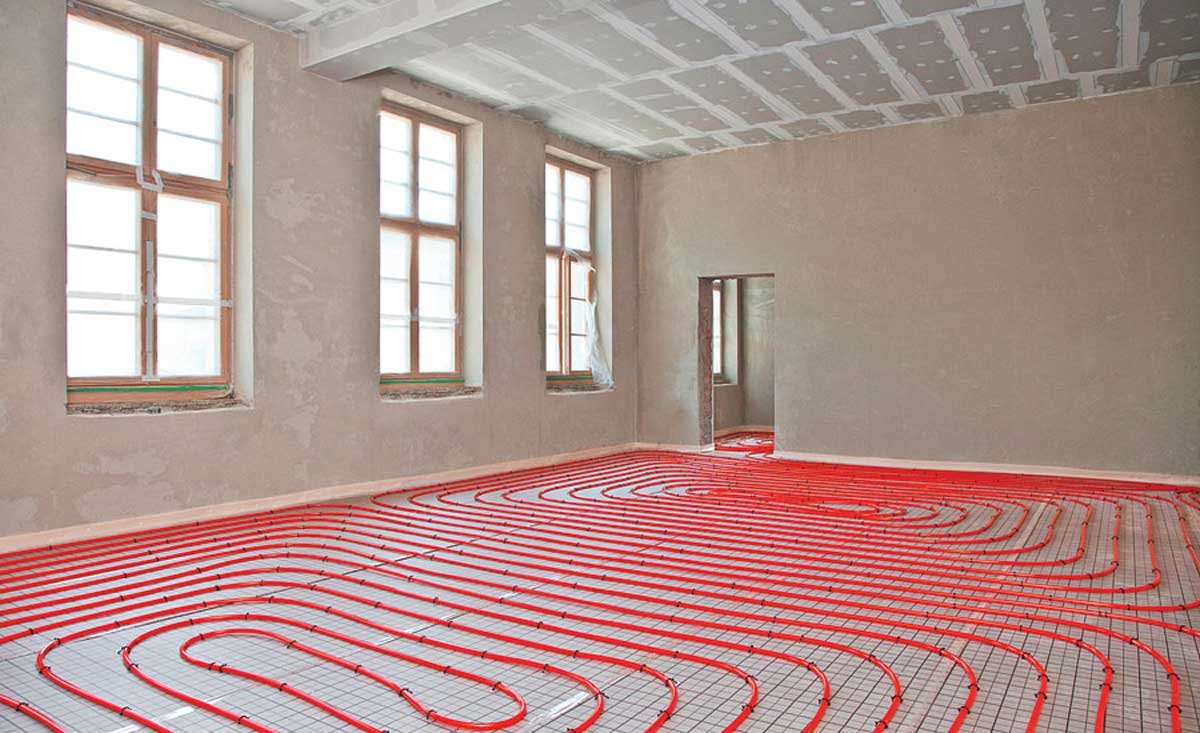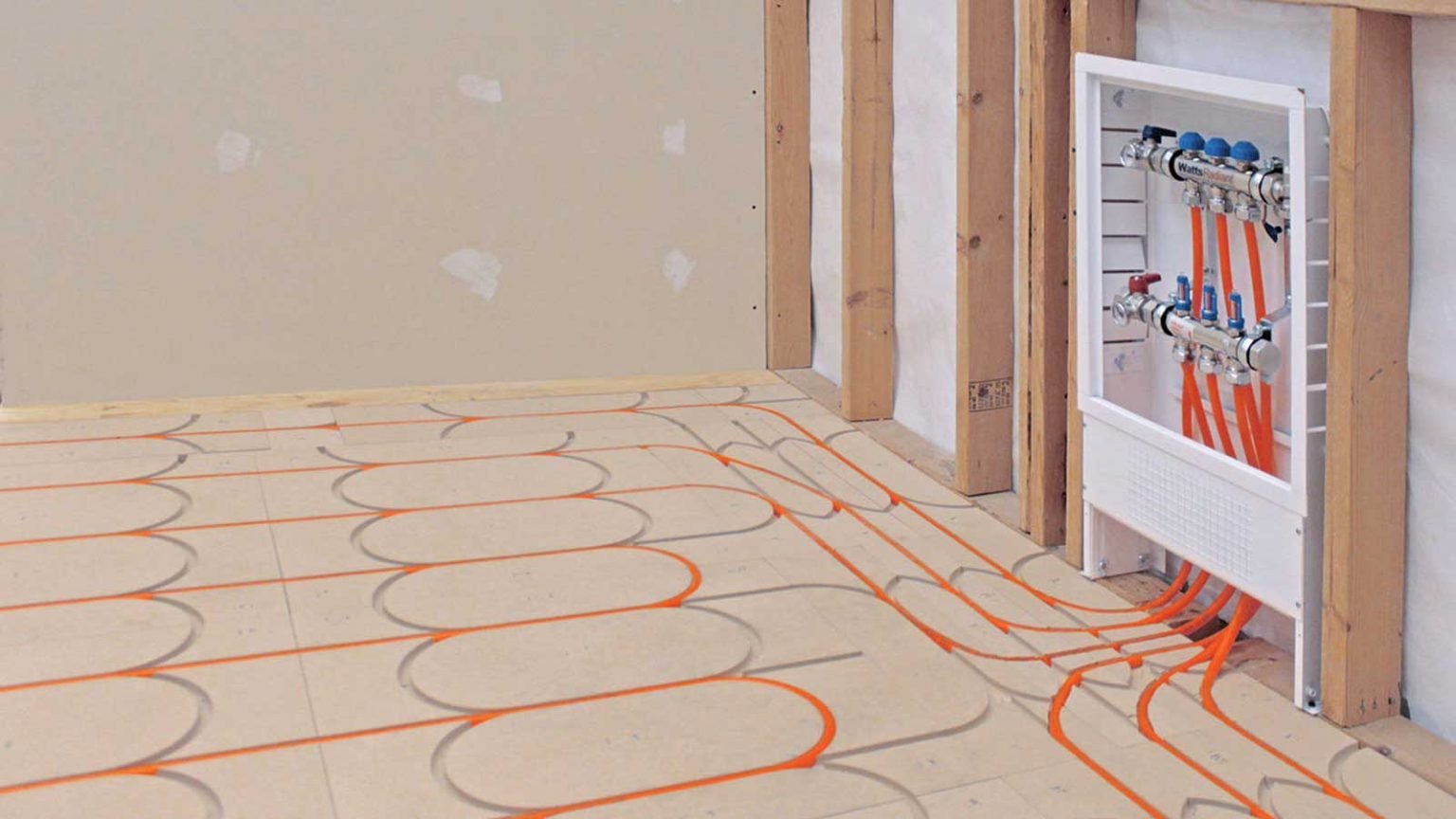Finding the right heating and cooling solution for your home is a necessity, but choosing the right system can at times be overwhelming.
While looking for a new heating or cooling solution for your home, you may have heard about hydronic solutions. Already widely used in many European countries, hydronic heating is becoming a more common choice for Australian households, for good reason.
What is hydronic heating and cooling?
A hydronic solution is a system that uses water to produce heat, rather than air, as with many conventional systems.
A boiler or air-to-water heat pump heats the water, then circulates it through piping to warm the home. Using a closed-loop system, once the water has travelled through the piping and cooled, it returns to the boiler or heat pump to be reheated.
Also referred to as radiant heating, there are numerous options for installation. Hydronic heating systems able to circulate heated water through pipes to underfloor heating systems, trench convectors, panel radiators or heated towel rails.
Hydronic solutions provide greater control over temperature, with thermostats used to direct certain temperatures to different areas of the home. The zoning capabilities mean when the set temperature is reached, the heating will turn off, and only turn back on when the temperature drops. They can also be programmed to turn on and off at set times.
This control allows you to only heat rooms in use and not waste it by heating the whole home, saving energy and costs.
Hydronic systems also offer flexibility. They can be used for both heating and cooling, so you don’t need to install two separate systems in your home.

An energy-efficient system
Hydronic systems use thermal radiation to emit heat underfoot or close to floor levels. Thermal radiation is the transfer of heat through the air in the form of electromagnetic radiation waves.
Heat emitters such as wall-mounted radiators, underfloor coils and heated towel rails emit radiant heat to warm the room. Hydronic heating systems heat objects in the room rather than the air, which results in a more even distribution of heat. As it is absorbed by objects, radiant heat cannot be blown away or moved.
While many conventional heating systems use fans and vents to expel warm air, the use of radiant heat provides a more comfortable and uniform distribution of heat throughout the home. By not using forced air, hydronic heat emitters are also not exposed to the cooling effects of airflow. This consistent heat can be maintained at a much lower ambient room temperature, making the system more energy-efficient, helping to provide savings on your energy bills.
Traditional gas-fueled boilers burn natural gas to produce heat, which results in the production of carbon dioxide and water vapour. These can escape through the boiler’s flue, leading to a significant loss of heat.
In comparison, condensing boilers can extract the heat that would typically be lost, achieving greater energy efficiency. This collected heat is used to pre-heat the water before it returns to the boiler. Hydronic heating transfers heat without the need for forced air circulation. As an excellent conductor of heat, the use of water reduces heat loss and improves energy efficiency.
Advantages of hydronic systems
As well as improved energy efficiency, hydronic heating and cooling systems provide numerous benefits for the home, from sustainability to a healthier home environment.
Hydronic solutions allow you to reduce your carbon footprint by using less fuel than conventional heating and cooling systems and wasting less energy. Hydronic systems can also utilise solar energy as the main source of power, allowing you to run your entire heating through renewable energy.
With low gas emission and temperature monitoring capabilities, hydronic heating and cooling systems run at the highest possible efficiency.
Hydronic heating systems require very little maintenance and repair compared with conventional air forced systems.
With radiant heat working by natural convection through pipes and radiators, hydronic heating and cooling systems can also be healthier for the home. These systems do not circulate air, which minimises dust and bacteria being blown throughout your home.
Hydronic heating solutions are also available in a range of designs to suit a home’s unique style.
While hydronic solutions can have a higher upfront cost of installation, the numerous benefits and cost and energy savings they provide make them a good long-term investment for your home.
Hydronic heating and cooling for your home
A sustainable solution for your home, hydronic heating and cooling systems are low maintenance, energy efficiency and cause minimal disruption. Due to these numerous advantages, hydronic systems continue to become a more popular heating solution for Australian homes.
For more information on hydronic systems and the various installation options for your home, contact the team at Hunt Heating.

